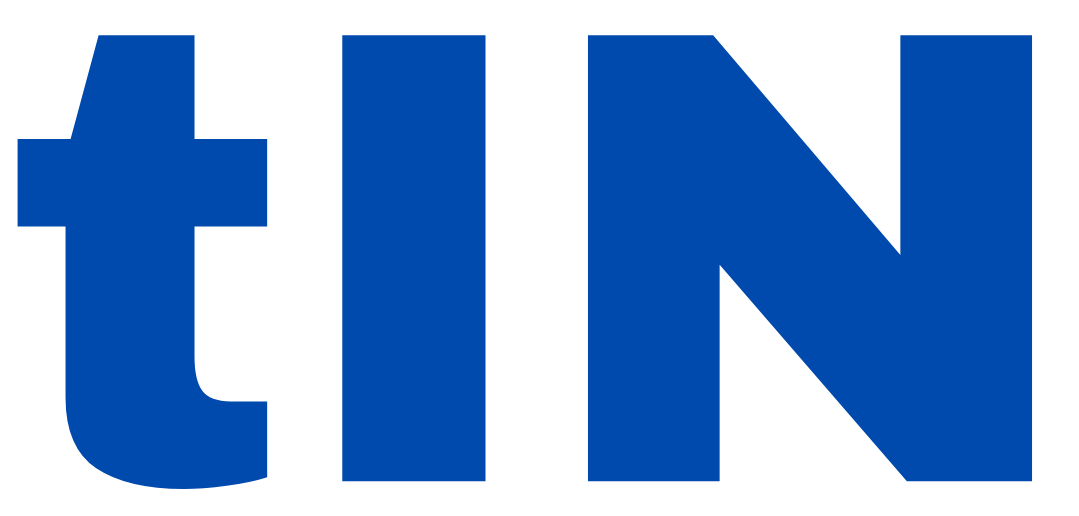This guide will equip you with the crucial techniques needed to optimize your Pay-Per-Click (PPC) campaigns for maximum return on investment. You’ll discover how to identify the right keywords, create compelling ad copy, and leverage data analytics to refine your strategies. By following these steps, you will position your business for sustained growth and increased visibility in the competitive digital landscape. Get ready to elevate your PPC efforts and drive targeted traffic to your website!
Understanding PPC
Before entering into the intricacies of Pay-Per-Click (PPC) advertising, it’s crucial to grasp what PPC truly entails. PPC is an online advertising model where you, as an advertiser, pay a fee each time one of your ads is clicked. This system is designed to drive traffic to your website, allowing you to reach potential customers more effectively. The beauty of PPC lies in its efficiency; you have the power to target specific audiences based on various factors such as location, keywords, and demographics, ensuring your ads reach the right people at the right time.
Overview of PPC
Understanding the landscape of PPC begins with recognizing its role in digital marketing. With search engines and social media platforms hosting a plethora of ads daily, PPC has become an integral part of a successful online strategy. By carefully crafting your ad campaigns, you can not only increase visibility but also position your brand prominently in the marketplace. This can significantly enhance your competitive edge, and if executed well, you may even see a considerable return on your investment.
Key Terminology
On your journey to mastering PPC, familiarizing yourself with key terminology is imperative for effective communication and strategy implementation. Essential terms include “CPC” (cost-per-click), which refers to the amount you pay for each click on your advertisement, and “CTR” (click-through rate), a metric that helps you gauge how often people click your ad after seeing it. You should also be aware of “Quality Score,” which impacts your ad placement and cost, as it measures the relevance of your ad to the targeted keywords.
Another term you will frequently encounter is “Ad Rank,” which determines the position of your ad on the search results page, based on your bid and Quality Score. Understanding these terms will empower you to make informed decisions and enhance your PPC strategies. Staying updated with your ad performance and keeping a close eye on metrics can ultimately lead to higher conversions and better campaign outcomes. Taking the time to get acquainted with this vernacular is fundamental as you explore the world of PPC advertising.
How-to Set Up Your PPC Campaign
One of the first steps in setting up your PPC campaign is to choose the right platform that aligns with your goals and audience. Various platforms like Google Ads, Bing Ads, and social media sites offer distinct advantages based on your specific target demographics. For instance, Google Ads is exceptional for search-based targeting, while Facebook Ads allows you to engage with users based on their interests. Evaluate your existing customer base and where they spend most of their time online to ensure you’re allocating your budget efficiently.
Choosing the Right Platform
Any platform you choose should not only enhance visibility but also deliver measurable results. Take the time to research each option, considering factors such as the advertising costs, the type of ad formats available, and whether they fit within your marketing funnel. It’s often beneficial to start with one platform, allowing you to master its features before expanding your efforts elsewhere. Experiment with different ad types and formats to find out what resonates best with your audience.
Defining Your Target Audience
Even the most sophisticated ad campaign will fall flat if you don’t define your target audience effectively. Start by analyzing your existing customer data and identifying key demographics, interests, and online behaviors. Your goal is to hone in on a specific audience that can genuinely benefit from your product or service. This can significantly enhance your click-through rates and conversions, as the ads will be presented to users who are more likely to engage with them.
Campaign success relies heavily on how well you understand your target market. Create buyer personas that encapsulate your ideal customers, taking into account factors like age, gender, job title, and purchasing behavior. By tailoring your message and keywords to these personas, you can enhance your reach and effectiveness. Moreover, continuously refine these personas as you gather more data from your campaigns, as your insights can lead to better targeting and improved ROI.
Tips for Effective Keyword Research
If you want to excel in your PPC campaigns, thorough keyword research is indispensable. To start, focus on aligning your keywords with your business goals and target audience’s search intent. Here are some important tips to keep in mind:
- Identify your target audience.
- Analyze competitor keywords.
- Leverage long-tail keywords.
- Consider seasonal and trending search terms.
Any attention to detail during your keyword research can lead to better ad performance and reduced costs.
Identifying High-Volume Keywords
HighVolume keywords are pivotal in driving traffic to your site. They are terms that generate a significant number of searches each month, offering a larger audience to attract to your ads. Use tools like Google AdWords Keyword Planner to analyze search volume and competition levels. Aim for keywords that not only have high search volumes but also align with your product or service offerings.
It’s important to sift through a mix of high-volume keywords and those that may not be as popular but still cater to a specific niche. By identifying a blend of these keywords, you can create a well-rounded PPC strategy that maximizes visibility while maintaining relevance to your target demographic.
Utilizing Keyword Tools
On your journey to effective keyword research, utilizing keyword tools is a game changer. These tools not only provide a wealth of data on search volume and competition but also suggest related keywords or synonyms that might improve the reach of your ads. Examples of effective keyword tools include SEMrush, Ahrefs, and Moz. They can vastly simplify the keyword selection process by analyzing industry trends and user behavior.
Identifying the right tools allows you to gain insights into keyword opportunities, track your competitors, and refine your ad targeting. These resources can also aid in managing your PPC budget more effectively, ensuring your campaigns remain optimized over time. With the right combination of tools and strategies, your PPC campaigns will ultimately see improved conversion rates and greater ROI.
Factors Influencing Bids and Budgeting
To effectively manage your Pay-Per-Click (PPC) campaigns, it’s necessary to understand the factors influencing your bids and budgeting. Various elements will determine how much you need to allocate for optimal results, and they include:
- Competition: The number of advertisers vying for the same keywords significantly impacts bid amounts.
- Quality Score: Higher quality scores may reduce the cost-per-click (CPC) you incur.
- Ad Position: Desired ad placements often require increased bids to secure visibility.
- Target Audience: The demographics and behavior of your target audience can dictate different bidding strategies.
This understanding allows you to make informed decisions that can enhance the effectiveness of your PPC campaigns, ensuring you stay competitive in the market.
Cost-Per-Click Models
Even though there are various cost-per-click (CPC) models available in PPC, you will generally encounter two primary options: manual and automated bidding. With manual bidding, you determine your max CPC for keywords, giving you complete control over your spending. In contrast, automated bidding utilizes algorithms to optimize bids based on performance metrics and goals, which can save you time while still maximizing your investment.
In choosing a CPC model, you should assess your own level of experience and the specific requirements of your campaigns. If you’re confident in your keyword strategy and market dynamics, manual bidding might be advantageous. However, if you prefer to rely on data-driven strategies that adapt in real-time, automated bidding could be the better choice.
Budget Allocation Strategies
There’s a variety of approaches you can take when it comes to budget allocation. You might consider splitting your budget into different segments based on campaign objectives or seasonal demand. For instance, dedicating a larger portion to high-performing campaigns can yield better returns. Alternatively, reserving some of your budget for new tests or seasonal spikes can lead to discovering new opportunities.
Strategies for budget allocation should be examined closely. You might want to start small with experimental campaigns, allowing you to fine-tune your approach before scaling up. It’s also wise to frequently analyze campaign performance, adjusting your budget allocation as necessary to respond to market trends and changes in competition. This will ensure you’re investing wisely and not overspending on underperforming areas of your PPC initiatives.

How-to Create Compelling Ad Copy
All effective PPC strategies hinge on the power of your ad copy. Crafting ad copy that resonates with your audience can enhance your click-through rates and conversion rates. Your goal is to create enticing ads that prompt your audience to take action. This involves understanding what motivates your target customers and reflecting that understanding in your ads. By approaching your ad copy with a strategic mindset, you can ensure that each word counts towards achieving your marketing objectives.
Crafting Headlines that Capture Attention
Copy writing captivating headlines is a fundamental skill in creating ads that draw clicks. You need to think about what sparks interest and piques curiosity within your target demographic. Utilize strong action words, incorporate numbers or statistics, and ask provocative questions that engage readers. Your headlines should not only capture attention but also communicate the value or unique selling proposition of your product or service succinctly. Aim for clarity, urgency, and relevance to your audience’s needs, making them feel compelled to learn more.
Writing Engaging Descriptions
Clearly communicating the benefits of your offering in your ad descriptions is equally important. These descriptions should provide more context and elaborate on the headline while addressing the specific pain points your audience may face. Utilize a friendly yet authoritative tone that builds trust and encourages readers to feel a connection to your brand. Introduce an element of urgency, if applicable, to encourage immediate action. Be sure to keep your target keywords in mind, as they enhance visibility and relevance in search results.
Descriptions should enhance the appeal of your ad while providing compelling insights into what you are offering. Focus on the specific benefits your product or service delivers, addressing potential concerns your audience might have. Use positive language that emphasizes value and distinctiveness while avoiding overly technical jargon. This approach will help you create an emotional link to your consumers, ultimately driving them towards making a decision to engage with your brand.
Tips for Landing Page Optimization
Unlike many digital marketers who overlook the significance of landing pages, you should recognize that a well-optimized landing page can significantly enhance your PPC campaign’s performance. To make your landing pages more effective, consider these crucial tips:
- Ensure mobile responsiveness to cater to all users.
- Create compelling headlines that capture attention.
- Use clear and concise calls-to-action (CTAs).
- Optimize page load speed to reduce bounce rates.
- Incorporate relevant keywords strategically.
The key to successful landing page optimization lies in aligning the page’s content with the messaging of your ads, delivering a coherent experience that encourages conversions.
Importance of Relevance
On your PPC journey, it’s imperative to maintain a high level of relevance between your ads and landing page content. When potential customers click on your ad, they expect to find information that corresponds directly to their search intent. If they are met with a landing page that diverges from their expectations, they are more likely to abandon the page and seek alternatives. By ensuring that your content is highly relevant, you not only enhance user satisfaction but also improve your Quality Score, ultimately leading to reduced costs and better ad placements.
On top of that, creating targeted landing pages for specific ad groups allows you to speak directly to different segments of your audience, making it easier for them to connect with your offer. This tailored approach not only boosts conversion rates but also strengthens your brand’s credibility. A seamless transition from ad to landing page fosters trust and paves the way for successful engagements.
Enhancing User Experience
Now, let’s talk about enhancing user experience on your landing pages. A user-friendly interface is fundamental to guiding visitors through their journey and ensuring they uncover what they are looking for. Simplifying navigation, utilizing clear layouts, and reducing clutter can significantly improve engagement. You should also consider the importance of good visual design — using engaging images and videos can capture attention more effectively than text alone.
Tips to improve your landing page’s user experience further include prioritizing intuitive design and providing easy-to-read content. Ensure your page loads quickly, as lengthy load times can lead to a high bounce rate. Interactive elements like quizzes or calculators can also engage users more deeply, making their experience more memorable. Ultimately, a positive user experience not only converts visitors but also encourages return visits, strengthening your customer base over time.
Summing up
Conclusively, mastering effective PPC strategies necessitates a comprehensive understanding of various elements that influence your campaign’s performance. You need to focus on thorough keyword research, optimal ad writing, and continuous monitoring of your ad spend and conversion metrics. By leveraging tools and analytics, you can gain insights into your audience’s behavior, allowing you to refine your approach. Staying updated on industry trends and algorithm changes will also empower you to adapt your strategies, ensuring that your PPC campaigns remain competitive and result-oriented.
Additionally, it’s vital to undertake regular A/B testing to assess what resonates best with your audience. This will help you fine-tune your tactics based on actual performance data, leading to better ROI. By committing to consistent learning and adjustments, you will not only enhance your PPC skills but also drive meaningful engagement and conversion that fuels your business growth. Stay proactive and strategic, and you’ll see your PPC efforts translate into tangible results.
FAQ
Q: What are the foundational steps to start running a successful PPC campaign?
A: To launch an effective PPC campaign, begin by identifying your target audience and understanding their needs. Next, conduct thorough keyword research to find relevant terms that potential customers are using. Then, create structured and compelling ad copies that resonate with your target demographic. Once your ads are ready, set up your campaigns on platforms like Google Ads or social media networks, paying attention to segmentation based on user behavior. Monitor the results closely, and be prepared to make adjustments based on performance data.
Q: How can I optimize my PPC campaigns for better performance?
A: Optimization involves several strategies. First, regularly analyze your campaign data to identify which keywords are driving traffic and conversions. Adjust your bids accordingly, increasing for high-performing keywords and decreasing for underperforming ones. Additionally, A/B test different ad copies and landing pages to find the most effective messages and designs. Implement negative keywords to filter out irrelevant traffic, and use remarketing techniques to engage users who have previously interacted with your ads. Consistent monitoring and tweaking are key to improving performance over time.
Q: What budget considerations should I keep in mind when planning my PPC strategy?
A: Budgeting for PPC involves balancing your advertising spend with the expected return on investment (ROI). First, determine your overall marketing budget and allocate a portion specifically for PPC. Set clear objectives for what you wish to achieve with this budget, whether it’s brand awareness or lead generation. It is also important to consider competition for your chosen keywords, as more competitive keywords may require a higher bid. Start with a smaller budget initially to test various strategies and adjust based on the results before scaling up.
![]()







